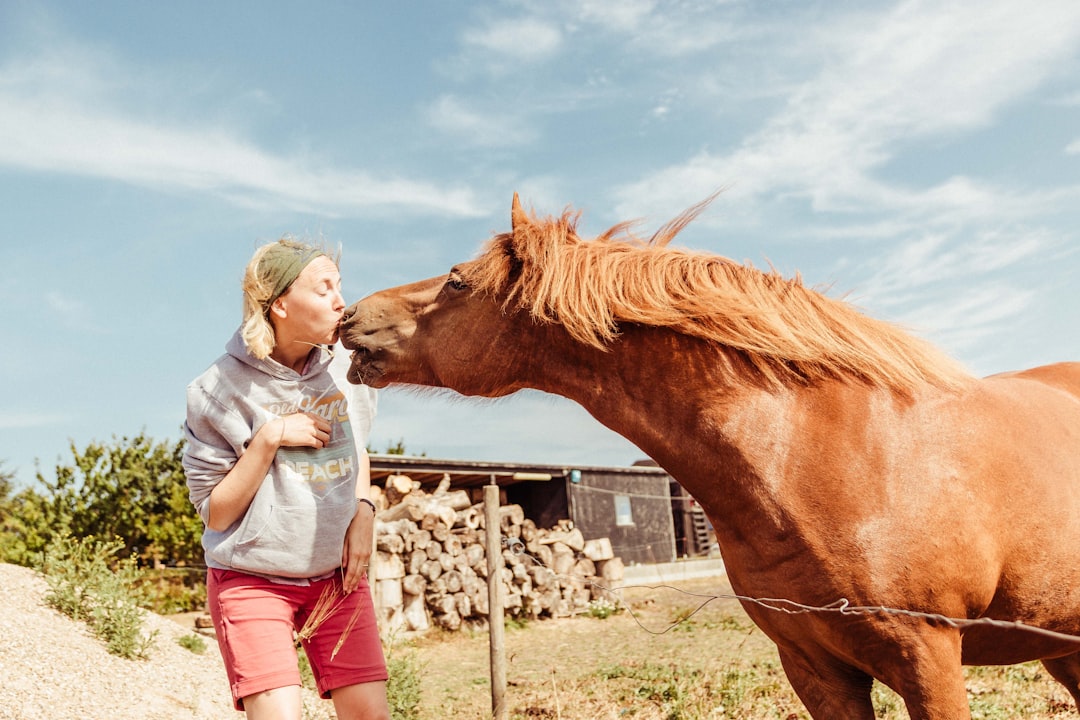Does your horse like you?
New study finds that the "love hormone" oxytocin is associated with friendly behaviour towards humans
This post is free for anyone to read. It takes time and effort for me to write these posts, so if you liked it or found it interesting, please consider commenting, sharing it with a friend, or sharing it on social media as a thank you! Also, if you want to get notified when I post next, please consider subscribing. That’s also free!
Assessing emotions in horses is tricky, because we can’t ask them how they feel. Instead, we rely on behavioural observations and physiological measurements as proxies. Most behavioural studies focus on negative emotions like fear, because they tend to be:
Easier to observe (bolting and aggression, for example, are very conspicuous behaviours).
Easier to trigger in experimental settings (through predictably painful and/or fearful stimuli).
Have obvious welfare implications (minimizing pain and distress is a tenet in any modern management system).
Recently, however, there have been attempts to measure more discreet positive emotions, bringing a deeper understanding of how our horses experience the world - and the things we do to them.

In their fresh new study “Acute changes in oxytocin predict behavioral responses to foundation training in horses” (2022)1, Niittynen et al. looked at how training of young horses affects their short-term oxytocin and cortisol levels, as well as their behaviour towards the trainer.
Oxytocin is often popularly referred to as the “love hormone”, as one of its many roles in the body is to mediate friendly interactions both within a species and between different species. It has previously been studied in dog-human interactions, but only very recently in horse-human interactions.
Cortisol is traditionally considered to be a stress-related hormone, associated with physical and emotional stressors. Both can be measured through non-invasive saliva sampling to get accurate short-term values.
I will relate the main results of the study - if you want to know more about the methodolgy and the limitations, the paper is open access and describes it in a straight-forward, easy to understand way. In general, it’s a neat study with interesting results and cautious interpretations.
Some of the main results are as follows:
Oxytocin levels increased over the course of a training session in horses that showed friendly behaviours towards the trainer, such as nuzzling and nipping.
Oxytocin levels decreased over the course of a training session in horses that showed strong flight responses such as bucking or bolting, and a similar tendency was seen for milder fear-related behaviours such as freezing or startling as well.
Colts had significantly lower cortisol concentrations overall compared to fillies.
Cortisol levels increased with the length of the training session, but there was no correlation between cortisol levels and behaviours, except for a tendency for horses who displayed more head-tossing to have higher cortisol levels after the training session.
The older, experienced horses had lower cortisol concentrations overall than the younger, inexperienced ones.
Both fearful and friendly behaviours decreased in all horses as the training progressed.
So, how do I interpret these results?
First of all, the study supports the use of oxytocin as a hormonal marker for positive emotions, particularly those associated with friendly human-oriented interactions. Previous studies have found similar relationships between oxytocin and friendly and fearful behaviours2. This adds to a growing body of evidence that non-human animals share the same biological foundations as we do - and, by extension, may experience emotions in a similar way.
The study also indicates that cortisol may be less reliable as an indicator of emotional stress and rather be an indicator of arousal/activity level, as there was no correlation between cortisol levels and fearful behaviours, but cortisol levels increased with the duration of the training session. How best to interpret cortisol levels is currently under discussion in the scientific community, so this study can add another piece to the puzzle.
Finally, I think the overall decrease in ALL behaviours, both friendly and fearful, over the course of the foundation training is interesting to note. It would seem that training replaces natural, species-appropriate behaviours with learned responses. Making horses less fearful of humans is, of course, the whole point of training - but what if we’re also making them less friendly?
It invites some consideration about the hows and the whys. What mechanisms do we use to overshadow the motivation to perform affiliative or avoidance behaviours? Are we just changing the behaviours, or the associated emotions, too? And while we want horses to be less afraid of us - do we really want them to be less friendly towards us?
Niittynen T, Riihonen V, Moscovice LR, Koski SE. Acute changes in oxytocin predict behavioral responses to foundation training in horses. Appl Anim Behav Sci. 2022;254 https://doi.org/10.1016/j.applanim.2022.105707
Kim Junyoung, Park Youngjae, Kim Eun Joong, Jung Heejun, Yoon Minjung. Relationship between oxytocin and serotonin and the fearfulness, dominance, and trainability of horses. J Anim Sci Technol 2021;63(2):453-460. https://doi.org/10.5187/jast.2021.e29
Lee G, Yoon M. Association of plasma concentrations of oxytocin, vasopressin and serotonin with docility and friendliness of horses. Domest Anim Endocrinol. 2021;74:106482. https://doi.org/10.1016/j.domaniend.2020.106482



